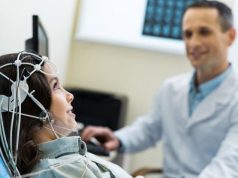Increases seen in isolated intracranial abscess and sinusitis complicated by intracranial abscess during early COVID-19 pandemic
WEDNESDAY, Aug. 10, 2022 (HealthDay News) — Cases of pediatric isolated intracranial abscess and sinusitis complicated by intracranial abscess increased during the early COVID-19 pandemic, according to research published in the Aug. 5 issue of the U.S. Centers for Disease Control and Prevention Morbidity and Mortality Weekly Report.
Noting reports of increased rates of intracranial bacterial infections diagnosed during or after infection with severe acute respiratory syndrome coronavirus 2 (SARS-CoV-2) and reports of pathogens, including Streptococcus species with more severe disease, possibly in association with SARS-CoV-2 infection, Daliya Khuon, M.D., from the Helen DeVos Children’s Hospital of Spectrum Health in Grand Rapids, Michigan, and colleagues examined this trend nationally during the the COVID-19 pandemic. A survey was conducted through the Emergency Infections Network (EIN) of the Infectious Diseases Society of America relating to intracranial infections and invasive Streptococcus spp. infections in patients aged 18 years or younger during the first two years of the COVID-19 pandemic.
The researchers found that 47 of the 109 respondents reported observing an increase in intracranial infections. In a follow-up survey of 64 EIN respondents, mean increases of 100.9 and 76.7 percent were seen for isolated intracranial abscess and sinusitis complicated by intracranial abscess, respectively, during the early COVID-19 pandemic. Decreases were seen in orbital cellulitis, sinusitis, and mastoiditis by an average of 14.5, 31.9, and 24.7 percent, respectively; there was a 116.7 percent decrease in mastoiditis complicated by intracranial abscess.
“Intracranial infections require prompt and intensive medical management; therefore, defining the pathogenesis, relation to SARS-CoV-2 infection, and other risk factors, can both raise public awareness and help medical providers diagnose and appropriately manage affected patients,” the authors write.
Copyright © 2022 HealthDay. All rights reserved.








